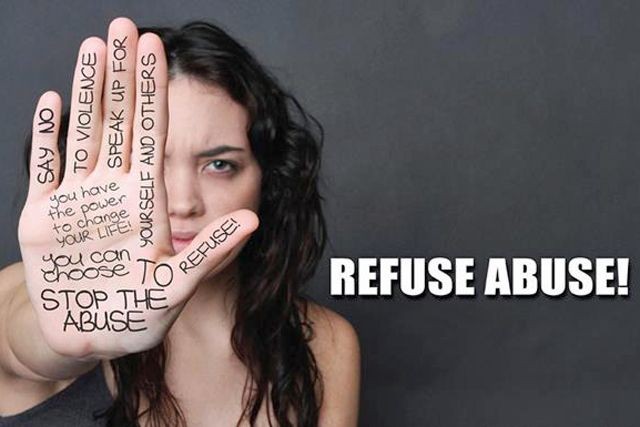
October is Domestic Violence Awareness Month. But awareness needs to be about more than purple ribbons and catchy phrases. The truth is that people are walking around this community as functioning abuse victims. People are dying to get out of their abusive situations but truly don’t know how, are not aware of options, or fear they will be judged and not have any support. The end result? Many are dying an emotional death, and sometimes, ultimately, a physical one as well.
Awareness has to be accompanied by action. There are a number of ways in which to move from conversation to change on this issue. Here are a couple of points that continue to stand out as concerns when I speak with individuals and agencies here and around the country.
First, society has to have a clearer understanding of what domestic violence is. According to the U.S. Department of Justice’s Office on Violence Against Women, domestic violence is a pattern of abusive behavior in any relationship that is used by one partner to gain or maintain power and control over another intimate partner.
The key is to understand that abuse is more than physical. It can be spiritual, financial, emotional, sexual, and psychological. There are far too many of us who still think that domestic abuse is only physical. When I give presentations regarding abuse, I am always sure to inform them that the physical abuse is usually secondary. It is extremely rare that you will have someone tell you that an abuser just walked up and hit them out of the blue. Upon further discussion about the days, weeks, months, or even years before the actual physical assault, there was something said or done by the abuser that led to his or her feeling comfortable enough to hit the victim. Oftentimes, it’s a comment or an action that is taken lightly and not viewed as an actual warning sign that physical harm is forthcoming.
Second, and equally important, is the message that we’re sending the victims themselves. I am so tired of people telling victims to just leave. We are doing them a disservice when we do that without offering them some sort of plan of when to do it or how to do it safely. I have yet to meet a victim who understood he or she was being victimized and didn’t know it was necessary to leave the abusive situation.
Contrary to popular belief, it is really just not that simple. There are a lot of financial, emotional, physical, and demographic challenges associated with leaving. Not to mention that the victim is in additional danger when they do leave, because that’s the time when abusers become the most agitated. They are losing their power and control over the victim.
What services are available for victims? Are we adequately listening to their voices and addressing their needs for holistic success?
I remember sitting at a stoplight one day, and a gentleman pulled up next to me. He told me that my tire looked very low and kept going. My intent was to go to the nearest gas station, because I could tell that something was wrong. Well, as fate would have it, I drove up another block or so, and the tire actually blew. About 30 minutes later, a man stopped and asked if I needed help. He not only put the temporary tire on my car, but he also followed me to a tire shop and bought me a new one.
The point is, far too often, we see problems that we don’t take seriously. We don’t make it our business to investigate the situation a little deeper. Or we will point out the problem with good intentions but not follow up to ensure that it has been adequately resolved. We assume someone else will step in.
I use my voice through a number of physical and social outlets on a regular basis to bring awareness all year long. But with awareness comes accountability and action, which I embrace by talking with victims, referring them to organizations that can assist them, and providing them with tangible resources, such as clothing and toiletries.
The media provide us with enough information that we should all be aware that domestic violence exists. Let us use that information as an opportunity to become even more educated about it, learn about the many types of abuse, and, finally, how we can put what we know into action, so that victims can transition into survivors who see that hope, help, and holistic healing is possible.
Joyce Kyles is a nationally credentialed advocate, speaker, trainer, author, and survivor of domestic violence and sexual assault.
 Louis Goggans
Louis Goggans 


 Greg Cravens
Greg Cravens